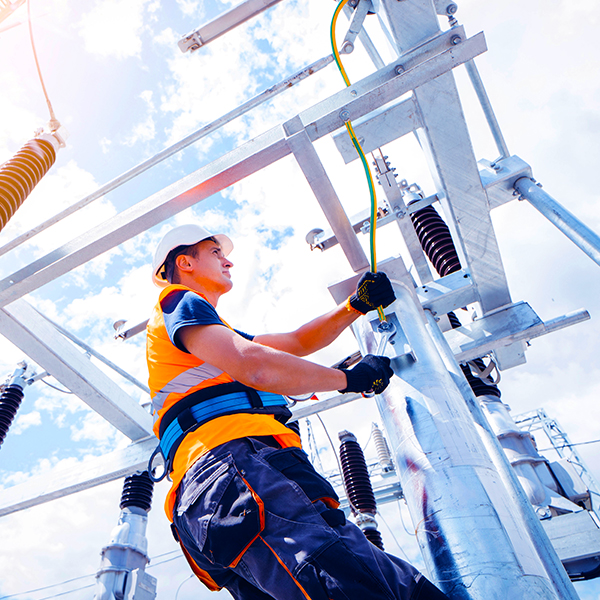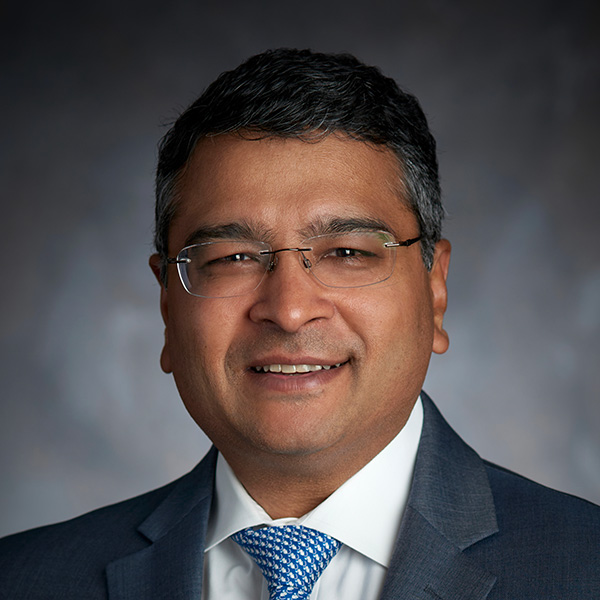

ARTICLE
The Future of Sustainability in Our World
By Hemant Porwal | August 22, 2023
Read Time: 4 Minutes
Currently, there are two secular trends driving the need for electrification: decarbonization and digitalization. Neither of these are new nor is there any indication that they will dissipate anytime soon. Local policies and economic incentives around the globe support electrification to reduce emissions, improve air quality, and increase energy security.
What Additional Demands Are Expected on the Power Grid as World Economies Electrify?
Historically, power consumption in the U.S. was broken down into three categories: residential, industrial, and commercial.
With the increased interest in electric vehicles (EVs), a new demand category has evolved: transportation. As the EV transportation market continues to gain momentum, automakers are demonstrating their strong commitment in amazing ways. According to a recent HSBC research report, vehicle manufacturers and battery makers plan to invest $860 billion globally by 2030 in the transition to EVs. Nearly a quarter of that, or $210 billion, is expected to be invested in the U.S., more than any other country.
The EV grid load will be significant in the U.S. A 100% conversion of light-duty vehicles to battery electric vehicles (BEVs) would increase overall U.S. power demand by ~30%. When also including some medium- and heavy-duty BEV trucks, economic growth, and broader electrification efforts, overall U.S. power demand could increase by ~65% by 2050. In the U.K., the government forecasts that the electrification of transports would increase power demands by ~40%, which when coupled with GDP growth and broader electrification would nearly double the country’s overall electricity demand by 2050.
Heat is the other focus of the decarbonization debate now that the decarbonizing of power (via renewables) and transport (largely via batteries) are underway. While the use of heat pumps for cooling/heating is widely discussed in Europe and subsidized by European governments, it has not yet become a topic of great interest in the U.S. Electric heat pumps will also add significant demand on the power grid globally.
Will Data Centers be a Big Driver for Electricity Demand in the Future?
According to an RBC Insights report, data centers are one of the most energy-intensive building types, consuming 10 to 50 times the energy per unit of floor space of a typical commercial office building. Collectively, these spaces account for approximately 2% of the total U.S. electricity use, and as our country’s use of information technology grows, data centers are increasing energy use. Power for high-density AI workloads is pushing average rack densities from current levels of 8 to 10kW per rack toward mid-20kW per rack for scale solutions as generative AI scales.
Data centers have a KPI called power usage effectiveness (PUE). PUE is a metric that is used to determine the energy efficiency of a data center and is calculated as the ratio of the total amount of energy used by the data center to the energy that is used by the IT equipment. The U.S. and China are moving to limit the PUE for data centers from the current standard of 2.0 to 1.5. Recent innovation in cooling technology is expected to drive the PUE down. So, while demand will definitely increase, we are already thinking about ways to offset the effect of more data centers.

What Actions is Wesco Taking to Achieve Its ESG and Sustainability Goals?
ESG and sustainability are now built into the fabric of our business. They form a critical focus of our work, our management, and our operational teams.
Our thinking on sustainability is two-fold: we aim to maximize efficiency while minimizing the environmental impacts of our own operations to promote company value. We aim to be the best partner in the market to help our customers achieve their sustainability goals with the products and services we offer.
For our own operations, we have set several sustainability priorities and goals. These include reducing greenhouse gas emissions by 30% and landfill waste by 15% by 2030. This also includes initiatives focused on employee training safety, where we are truly leading our industry.
We are on a mission to create work environments across the globe that are inclusive, accommodating, and safe. In 2021, Wesco’s Global Inclusion and Diversity Council led the creation of business resource groups (BRGs) supporting the representation of veterans, women, people of color, LGBTQ+ and allies, and those with diverse abilities in our business. More than 2,200 employees from 23 countries have joined one or more BRG.
To achieve our sustainability goals, we have implemented numerous initiatives including retrofitting our own facilities with LED lighting, pursuing solar power, expanding recycling activities, and engaging with our suppliers to implement increasingly ambitious sustainability goals. Our greatest impact will, however, be in helping our customers to unlock efficiency and to achieve their sustainability targets with the products and services that we offer. When a business wants to reduce its carbon footprint, improve its recycling processes, or improve efficiency, we have the solutions and the experts to navigate the process of reaching sustainability goals.
Are You Ready to Begin Working on Your Company’s Sustainability Goals?
To learn more about Wesco’s solutions and our network of partners, contact one of our experts. We can help you evaluate, plan, install, and manage your systems.


ABOUT THE AUTHOR
Hemant Porwal, CPSM is Executive Vice President, Supply Chain and Operations at Wesco
Hemant was named EVP, Supply Chain and Operations, of Wesco in June 2020. He has responsibility for global product category teams that drive go-to-market strategies with a world-class supply base, as well as operational ownership of safety, supplier diversity, sustainability, sourcing, inventory, operations, transportation, and real estate functions for Wesco. Prior to this appointment, he held the role of Vice President of Global Supply Chain and Operations when he joined Wesco in January 2015.

